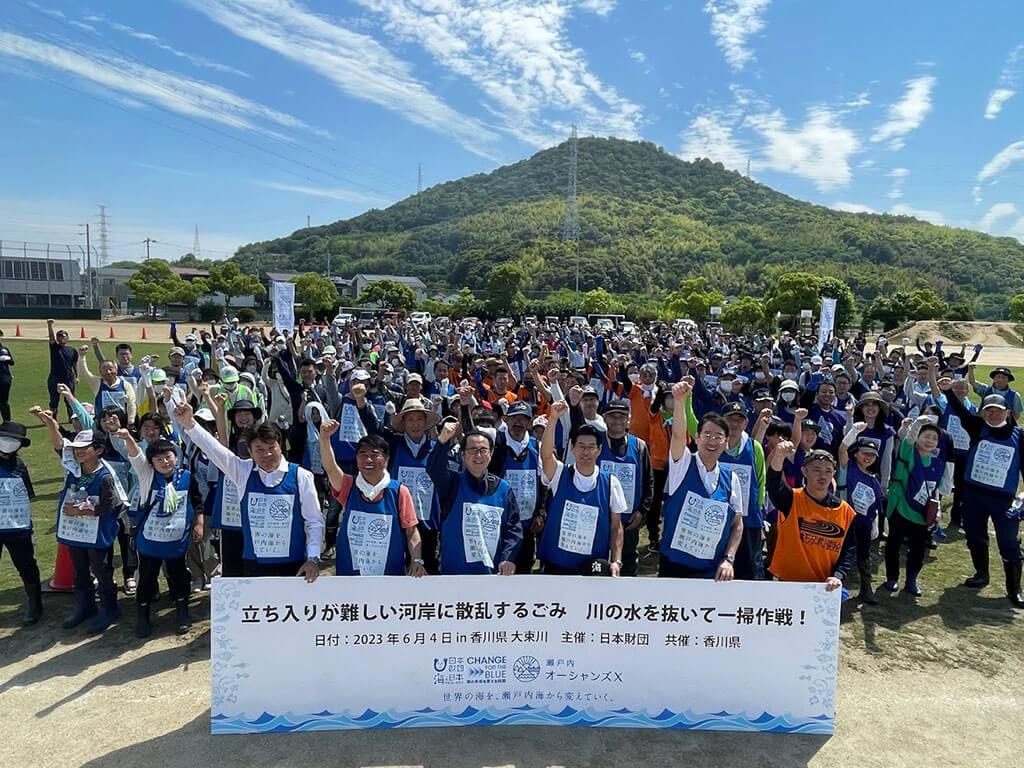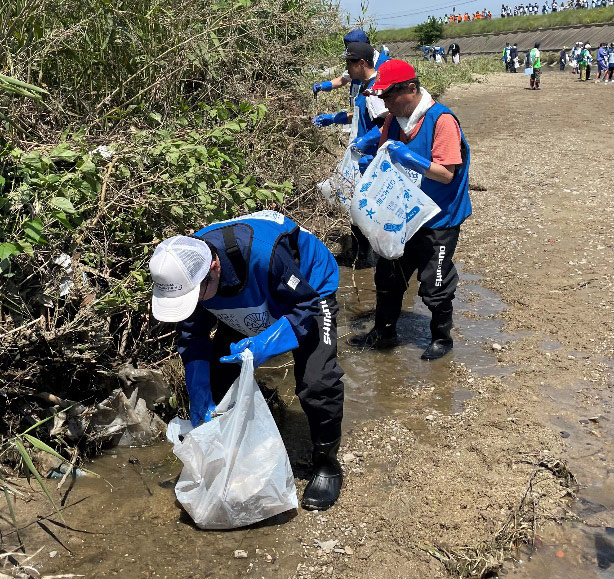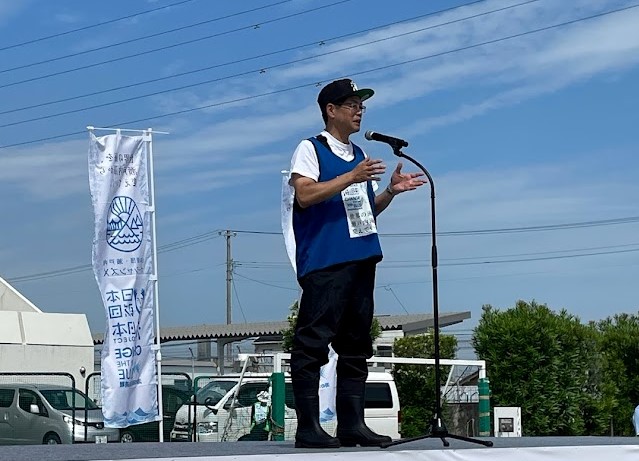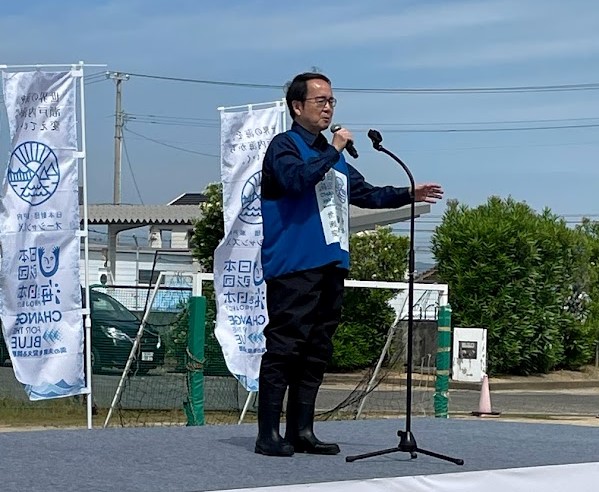Draining Remote River Section for Efficient Collection of Roughly 2 Tons of DebrisVerification cleanup in difficult-to-access section of Daisoku River, Kagawa Prefecture held on June 4
As part of its efforts to reduce plastic ocean debris, The Nippon Foundation, in cooperation with Utazu Town, Marugame City, and Sakide City in Kagawa Prefecture, carried out a verification project on June 4 for the efficient collection of debris from the riverbanks along a section of the Daisoku River that is difficult for people to access to collect trash.
Uneven terrain and fences make the riverbanks difficult to access, and large amounts of debris accumulate in areas that are overgrown with weeds. This large cleanup activity was held prior to the start of rainy season, when rain washes large amounts of debris into the ocean. After lowering the water level by diverting the river’s upstream water to agricultural channels and letting the remainder flow directly into the ocean, volunteers entered the riverbed and collected roughly two tons of plastic debris that had been scattered along roughly two kilometers of the river. This verification project demonstrated that debris that had been scattered by a river could be collected efficiently, even in an area that is difficult to access.
Roughly 350 people participated in the event, including members of local fishery cooperatives, people involved in agricultural channel management, members of local fire brigades and local governments, motorboat racers, and students, who were joined by Kagawa Governor Toyohito Ikeda and The Nippon Foundation Executive Director Mitsuyuki Unno. The Nippon Foundation will use the knowledge gained from the event to continue to build models for efficient trash collection activities in areas like rivers and remote islands that are difficult to access.

This event was carried out with a donation from BOATRACE Marugame, the motorboat racing venue in Marugame City, and was part of the Setouchi Oceans X project, being jointly carried out by Kagawa Prefecture and the three other prefectures bordering the Seto Inland Sea and The Nippon Foundation, with the aim of reducing the amount of debris flowing into the area by at least 70% and increasing the amount collected by at least 10%, to make the Seto Inland Sea free of ocean debris.

Comments
Mitsuyuki Unno, Executive Director, The Nippon Foundation
We hope to create a model for draining a river and collecting all the trash scattered in the vegetation before it flows into the ocean. We hope this activity will spread beyond the Seto Inland Sea to all of Japan and the rest of the world, to leave a bountiful ocean to the next generation.

Toyohito Ikeda, Governor, Kagawa Prefecture
The majority of the ocean debris in the Seto Inland Sea is plastic bottles and other plastic debris that flows into the ocean from rivers. I want Kagawa Prefecture to use this activity as a starting point for future cleanups and to reduce discarded debris.

Setouchi Oceans X project
The project was launched in December 2020 by the four prefectures bordering the Seto Inland Sea (Okayama, Hiroshima, Kagawa, and Ehime) and The Nippon Foundation as a comprehensive project to address ocean debris. Using the Seto Inland Sea, which is semi-enclosed and therefore receives relatively little inflow of outside ocean debris, as its field of operations, the project has four main components: (1) Surveys and research; (2) Coordination between companies and local communities; (3) Raising awareness, education, and activities; and (4) Policymaking.
Related News
Contact
Public Relations Team
The Nippon Foundation
- Email: cc@ps.nippon-foundation.or.jp



